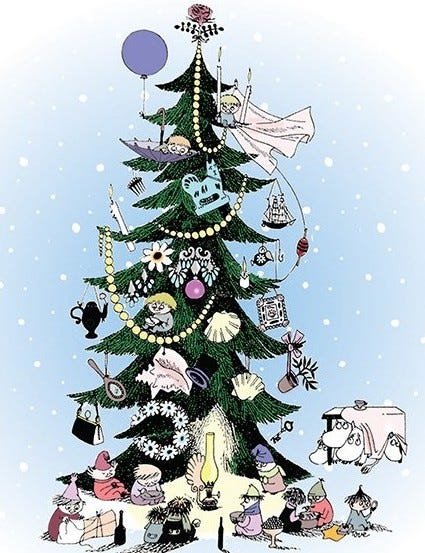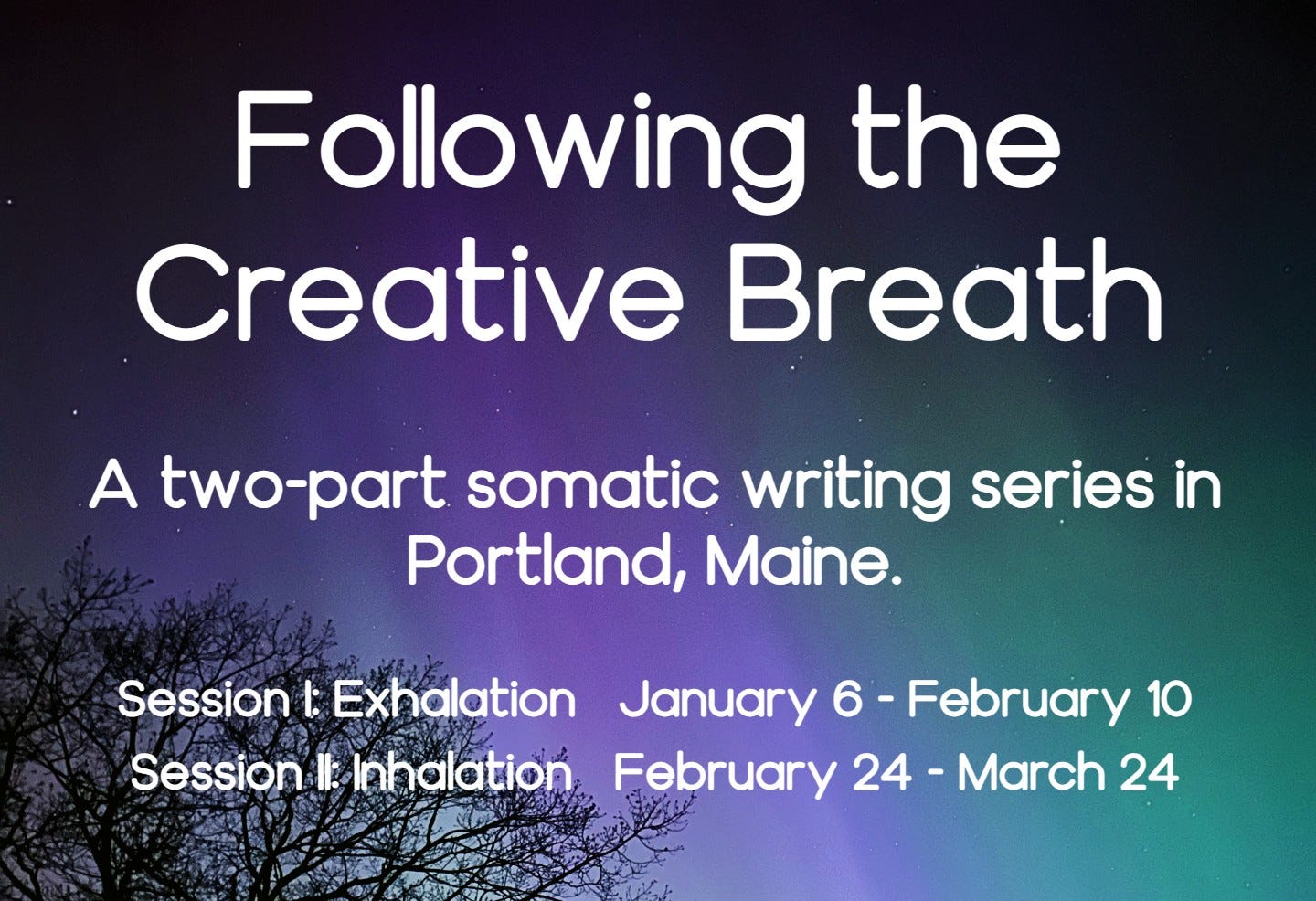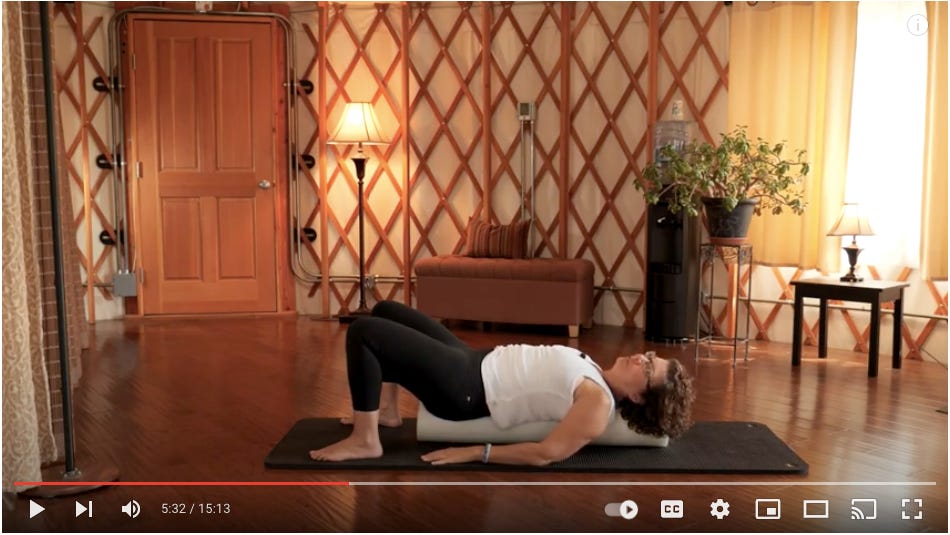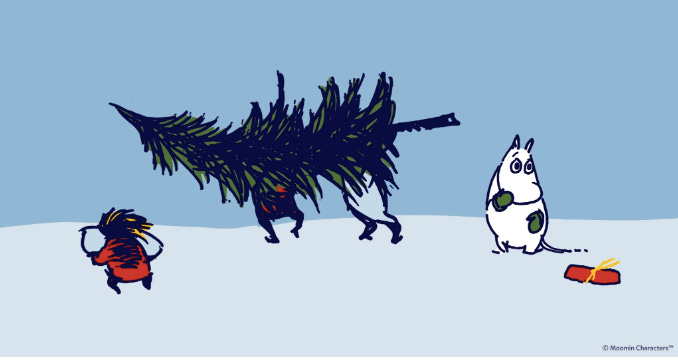A few quick notes: Folks near Portland, Maine, join us for Following the Creative Breath, a two-part somatic writing series at beginning early next year. Early bird pricing ends on December 15th. Learn more.
I’ll be offering a free, one-hour online somatic writing workshop on Dec. 22nd at 11am EST. We’ll explore writing in the key of solstice using gentle movement/breath, writing prompts, and (optional) sharing. Register here.
Thanks for reading! More info about my work to help you live well in the body you have is here.
When my Swedish family does Christmas, it is a process. Unwrapping presents (itself an ordeal involving rhyming clues for each gift) doesn’t even begin until we’ve stoked the fire, poured the coffee, assembled saffron bread, oranges, and gingersnaps, and read a special story about Christmas.
No, not that story.
Every year, we read The Fir Tree, by author, illustrator, and personal hero Tove Jansson.
In it, the Moomintrolls - a rotund species that usually hibernate peacefully through winter - are awoken abruptly to the mayhem and stress of holiday preparations. Disoriented and afraid, they begin to glean, from what neighboring creatures shout as they rush past, that Christmas is a monstrous, ravenous, impending thing.
“‘Mamma, wake up,’ Moomintroll said anxiously, ‘Something’s on. They call it Christmas.’
‘What d’you mean?’ his mother said and thrust her snout out from under her quilt.
‘I don’t really know,’ her son replied. ‘But nothing seems to be ready, and something’s got lost, and all are running about like mad. Perhaps there’s a flood again.’
They begin to puzzle out what this crisis demands: a fir tree by nightfall (“The danger comes by dark, then,” concludes the Snork Maiden), food, decorations, gifts.

“Everybody,” writes Jansson, “brought the most beautiful thing he had to placate the incomprehensible powers of winter.”
Do you see the subtle turn Jansson’s done there, from Christmas to winter? Underneath the stress of the holiday is a profound misunderstanding of what the season asks for. Not breathless rushing, but something quiet and beautiful.
Once everything is assembled, the Moomins gather by the fir tree.
Then they all sat down in the snow again and waited for the frightening guest.
Time passed, and nothing happened.
Beholding the stars and candles, the small creatures taking it in, and the great nothing happening, Moomintroll says, “I believe the hemulen and his aunt and Gaffsie must have misunderstood the whole thing.”
Oh, those Moomins. As an adult I appreciate a different aspect of this story every time I hear it (as an impatient, why-must-we-reread-this-story-instead-of-opening-presents child, not so much).
If you have even a toe in the current of the holidays, it’s easy to get swept up in the rush. But this time of year actually invites a different way of occupying time. One that wise
names in Wintering: The Power of Rest and Retreat in Difficult Times:"Wintering is a time...for reflection and recuperation, for slow replenishment, for putting your house in order. Doing these deeply unfashionable things — slowing down, letting your spare time expand, getting enough sleep, resting — is a radical act now, but it’s essential."
So friends, as we head into the shortest days here in the north, I wanted to share a gentle somatic writing practice to dip into this actual season.
After the Moomintrolls & , an embodied writing practice:
Preparation
Begin by bringing to mind the practices and rituals that connect you to your own rhythm (this might look like any number of ways: A walk in the woods. Sound of rain. An excellent cup of coffee.) When you hold these in your awareness, what do you notice in your posture? Your breath? What happens when you linger here?
Prompt
From this awareness, write into: What is essential...
Go for 10 minutes, letting yourself linger in the sensations and images.
Exploring further
The fascial system - the web of connective tissue that surrounds and holds everything within you - knows something about inner pacing. It softens when we stay in one spot and allow the tissue to soften. Put differently: Fascia responds more to time than pressure (and if your nervous system is nodding along to this: yes.)
For guidance, watch this sweet myofascial self care video from friend/gifted body worker Renie Allen (those without a foam roller might modify with a rolled-up towel).
Afterwards, try writing into: Slow replenishment...
What might this look like as a practice? A memory? A story inspired by fantastical woodland creatures? ;)
Feel free to leave an excerpt of your writing in the comments below!







